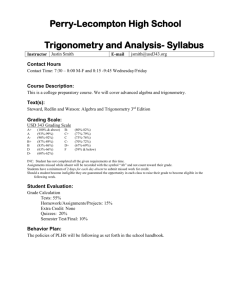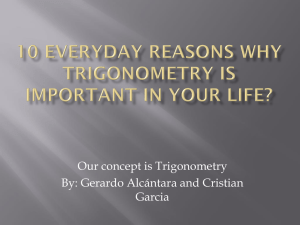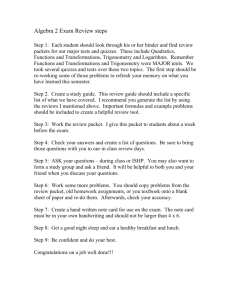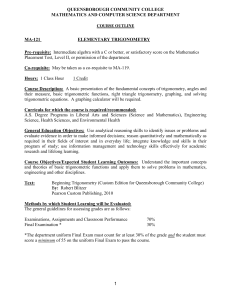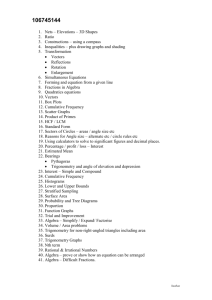Trigonometry in Physics
advertisement
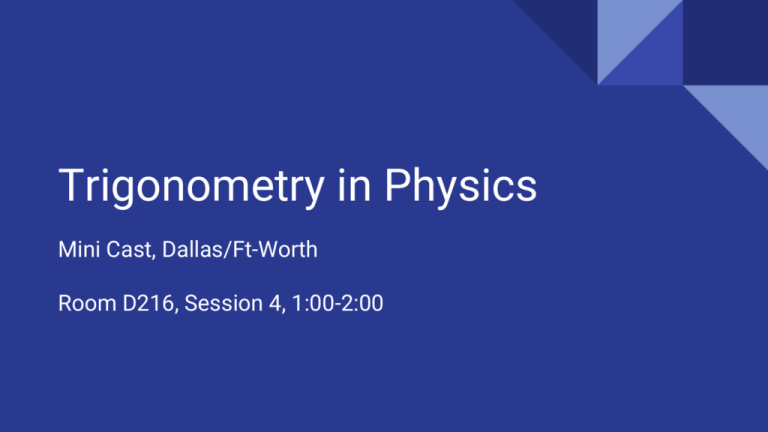
Trigonometry in Physics Mini Cast, Dallas/Ft-Worth Room D216, Session 4, 1:00-2:00 Trigonometry in Physics Presenters Kevin Roberts, Physics, Argyle High School Clay Stanfield, Physics, Richardson High School kroberts2@argyleisd.com james.stanfield@risd.org Trigonometry in Physics In physics we use trigonometry for a variety of tasks: Measuring and estimating distances Vector problems where X and Y components are separated Projectiles at angles, forces at angles, hanging objects, inclined planes and free-body diagrams, collisions in 2 D Trigonometry in Physics Students learn about Sine, Cosecant (Sin-1), Cosine, Secant (Cos-1), Tangent and Cotangent (Tan-1) in math class. It is briefly introduced in geometry class, and is then extensively worked with in pre-calculus class usually midway through the year. There are many students that simply cannot relate the mathematical functions to the real world applications that present themselves in physics class. Trigonometry in Physics We can minimize the “trauma” on the students by pre-teaching the implementation of these functions, before we need them in physics class. We suggest 3 activities from www.teachengineering.org (NSF National Science Digital Library) Trig River grades 8- http://tinyurl.com/hxxpvcx Trigonometry via Handheld device grade 11 http://tinyurl.com/z359666 Trigonometry via Mobile Device grade 11 http://tinyurl.com/zlgy9h3 Trigonometry in Physics Trigonometry lab in class: Hands-on Activity: Trigonometry via Mobile Device Students investigate the relationships between angles and side lengths in right triangles with the help of materials found in the classroom and a mobile device. Using all or part of a meter stick or dowel and text books or other supplies, students build right triangles and measure the angles using a clinometer application on an Android® (phone or tablet) or iOS® device (iPhone® or iPad®). Then they are challenged to create a triangle with a given side length and one angle. The electronic device is used to measure the accuracy of their constructions. Trigonometry in Physics Follow Up Project: Measure heights of objects around school or house: Trigonometry in Physics Trigonometry in Physics Hands-on Activities We have a few activities to help students practice measuring angles (some struggle to use a protractor) and then finding vector components and vector addition. Spring Scales and a hanging mass This activity comes from the Principles of Technology curriculum. You can vary the angles and mass for a variety of resultant vectors. Collisions in 2D This little apparatus is from Flinn Scientific. One marble rolls of the ramp and collides at an angle with the second marble. Using carbon paper to track landing spots, and a protractor and meter stick we can break some vectors into components and get a resultant. We Value Your Feedback! Trigonometry in Physics Thank You! Session ID: 78 tinyurl.com/dfwminicast16
